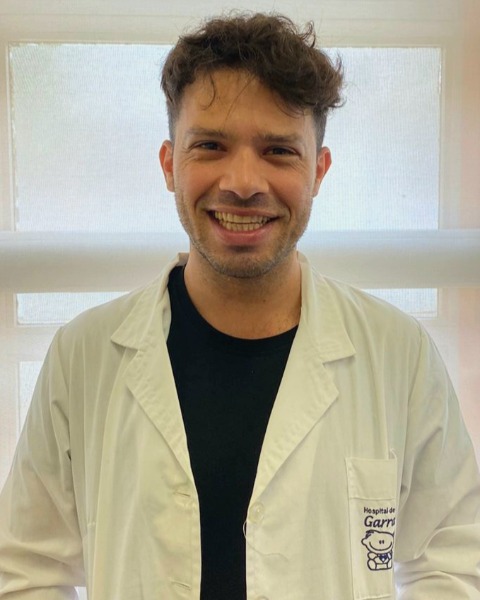Pharmacometrics & Pharmacokinetics (PMK)
Category: Member Submission
Session: Poster Session I
LB-014 - POPULATION PHARMACOKINETICS AND BIOAVAILABILITY OF TACROLIMUS ORAL SUSPENSION IN CHILDREN WITH HEMATOPOIETIC STEM CELL TRANSPLANT (HSCT)
Wednesday, May 28, 2025
5:00 PM - 6:30 PM East Coast USA Time
L. Brstilo1, M. Ibarra2, a. Juliá3, J. Testard4, S. Salgueiro4, A. Mendoza4, C. Pérez4, N. Licciardone4, P. Cáceres Guido4, R. Staciuk4, F. Buontempo4, P. Schaiquevich4; 1Hospital de Pediatría JP Garrahan, Buenos Aires, Argentina, 2Universidad de la República, MONTEVIDEO, Uruguay, 3HOSPITAL DE PEDIATRÃA JP GARRAHAN, CIUDAD AUTÓNOMAS DE BUENOS AIRES, ARGENTINA, 4HOSPITAL DE PEDIATRÃA JP GARRAHAN, CIUDAD AUTONOMA DE BUENOS AIRES, ARGENTINA.

Lucas Joel Brstilo, PharmD (he/him/his)
PhD Student
Hospital de Pediatría JP Garrahan
Buenos Aires, Ciudad Autonoma de Buenos Aires, Argentina
Background: Tacrolimus is the first-line immunosuppressant for preventing graft-versus-host disease (GVHD) in children undergoing hematopoietic stem cell transplantation (HSCT). Due to the large inter-individual variability in the pharmacokinetics (PK) and the narrow therapeutic index, therapeutic drug monitoring (TDM) is recommended to minimize the risk of GVHD and toxicities. Our hospital pharmacy prepares tacrolimus oral suspension for children with swallowing difficulties. However, PK models for TDM and dose conversion from intravenous (IV) to oral suspension are limited.
This study aimed to develop a population PK model of tacrolimus for TDM and to assess the dose conversion ratio from IV to oral suspension in pediatric patients with HSCT.
Methods: Data were collected prospectively from July 2021 to October 22, 2024. Sixteen children receiving continuous IV infusion who were switched to tacrolimus oral suspension (dose conversion 1:4) were included. A total of 339 whole blood samples were collected and quantified by immunoassay (CMIA): 260 during IV administration and 79 corresponding to 12-hour time profiles (0, 20 minutes, 1, 3, and 12 hours) during oral suspension administration. Data analysis was performed using a non-linear mixed effects approach with MonolixSuite® considering demographic, clinical, and pharmacological factors as potential covariates influencing tacrolimus PK.
Results: A one-compartment model with linear elimination adequately described tacrolimus PK. Typical estimated values (%RSE) for clearance (CL), volume of distribution (Vd), and bioavailability (F) were 1.5 L/h (9.5%), 42.3 L (17.5%), and 40.0% (14.8%), respectively. The delay in the absorption process was best characterized by a lag-time parameter, with a typical value of 0.3 h-1 (5.3%). Allometrically scaled weight was a covariate that improved the estimation of CL, Vd, and F, while no other covariates significantly influenced tacrolimus PK parameters.
Conclusion: A population PK model was developed to describe the PK of tacrolimus during continuous IV infusion and oral suspension administration in pediatric patients with HSCT. The model showed that the typical bioavailability of the oral suspension was 40%, suggesting that a conversion factor of 2.5 from IV to oral suspension therapy may be more appropriate in our clinical settings.
